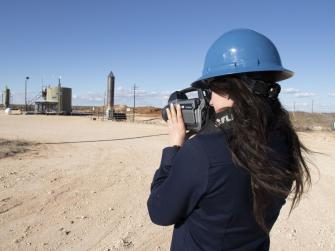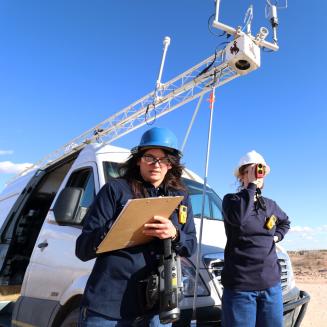We’re analyzing methane emissions in the world’s largest oil patch
Permian project is measuring and reporting oil and gas methane emissions like never before

The Permian Basin is the largest oil field on the planet, and it may be the nation’s largest emitter of the potent greenhouse gas methane. To find out, EDF recently launched a first-of-its-kind research initiative. The Permian methane analysis project, or PermianMAP, uses proven methods and state-of-the-art technologies to locate, measure and quantify the methane emitted from oil and gas facilities.
Early findings reveal Permian companies emit nearly three times more methane than EPA estimates. That’s 1.4 million metric tons of methane generated each year from the Permian Basin alone -- enough gas to meet the annual gas needs of nearly 2 million homes.We’re sharing and regularly updating our findings with the public, so operators and policymakers can take smart actions to reduce this harmful pollution fast.
Explore the map to see what we found
Turning data into action
The methods we’re using in the Permian are the same techniques we used in our groundbreaking methane research published in the journal Science.
We published the first survey results in April, and we will continue to share this information with the public so companies, and the agencies responsible for protecting our environment, can take meaningful steps to reduce emissions and improve performance.
Cutting methane emissions is often as simple as tightening valves, closing tank doors or relighting flares. The biggest emissions tend to come in random, unpredictable ways, which means proactive, regular monitoring is among the best reduction strategies.
We know that reducing emissions is achievable, because the science proves it. While some areas we measured had very high emissions, other well sites had emissions so low they could not be detected.
With responsible pollution monitoring and better performance – we can achieve a future that’s 100% clean.
MEDIA CONTACT
Lauren Whittenberg
(512) 784-2161 (office)














